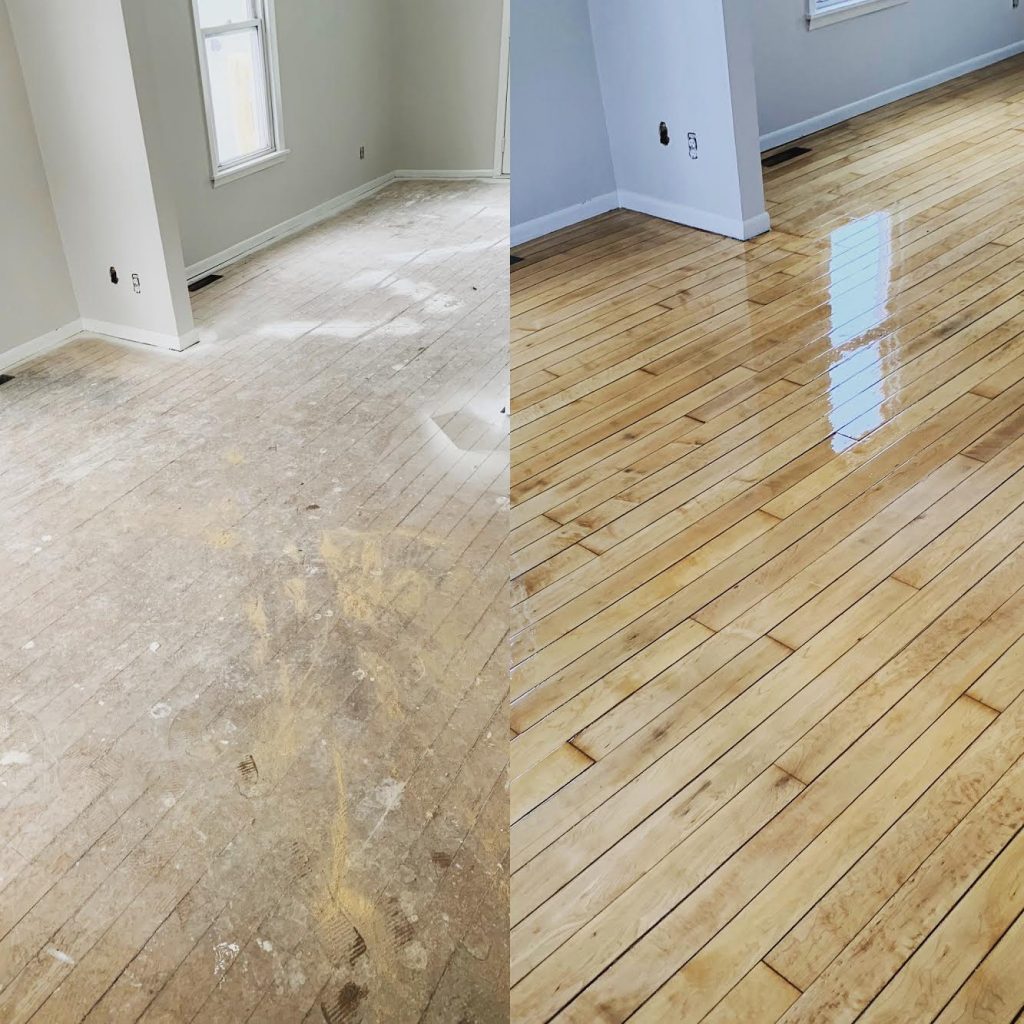Seasonal weather changes and hardwood floors

How Seasonal Changes in Minneapolis, MN, Affect Hardwood Flooring: Expansion, Contraction, and Other Weather-Related Effects
Hardwood floors are an enduring symbol of beauty, elegance, and value in the home. Whether you’re installing them for the first time or are simply maintaining the floors you love, it’s essential to understand how environmental factors—especially weather—can impact the performance and longevity of your hardwood floors. Here in Minneapolis, MN, where the weather fluctuates dramatically between frigid winters and humid summers, homeowners should be particularly aware of how seasonal changes can affect their hardwood floors.
As experts at Choice Hardwoods, we’ve worked with thousands of homeowners to provide high-quality flooring options and advice on how to care for hardwood floors in varying climates. In this article, we’ll explore how the seasonal weather changes in Minneapolis affect hardwood flooring, the common problems that can arise due to temperature and humidity fluctuations, and most importantly, how homeowners can take preventive steps to minimize potential damage.
How Weather Affects Hardwood Flooring
Unlike some flooring materials, hardwood is a natural product, and as such, it responds to changes in temperature and humidity. Seasonal shifts, such as the cold, dry winter months and the humid, warmer summer months, can cause hardwood to expand and contract. While this is a natural and inherent property of the material, it can lead to several issues, including gaps, warping, and cupping, if not properly managed.
1. Expansion and Contraction of Hardwood Floors
The primary weather-related concern for hardwood floors in areas like Minneapolis is expansion and contraction. These two processes occur as a result of changes in humidity and temperature.
Expansion: In the summer, when temperatures rise and humidity increases, hardwood absorbs moisture from the air, causing the wood to expand. This can lead to slight gaps between planks becoming smaller or entirely closing up. If your home is humid, the increased moisture can cause the floorboards to buckle or swell, which could lead to visible warping.
Contraction: In contrast, the dry, cold winters in Minneapolis cause the air inside homes to become much drier, especially with the use of heating systems. As a result, hardwood floors lose moisture, causing the wood to contract. This contraction can lead to gaps between the planks, which may be particularly noticeable during the winter months when relative humidity inside the home is at its lowest.
Wood floors are designed to handle some level of expansion and contraction, but if the moisture levels in your home fluctuate drastically, the natural movement of the wood can be more pronounced, potentially leading to more serious damage.
2. Cupping and Crowning
In addition to expansion and contraction, extreme fluctuations in moisture levels can cause cupping or crowning of the hardwood floors.
Cupping: When a hardwood floor expands unevenly, the edges of the planks can rise higher than the center, creating a concave shape. This is known as cupping. Cupping is typically caused by excess moisture, such as when the humidity in the home increases dramatically, or the wood has absorbed moisture through a water spill, high humidity, or poor ventilation. The moisture imbalance creates tension in the wood, leading to a change in shape. Cupping is often most noticeable in the summer months when humidity levels are higher.
Crowning: On the other hand, crowning occurs when the center of the plank becomes higher than the edges. This happens when moisture loss is uneven, typically due to excessively dry conditions. During the dry winter months in Minneapolis, as the heating systems run consistently and the air in the home becomes drier, wood can contract unevenly. Crowning is less common than cupping, but it can still happen, particularly if a significant moisture imbalance occurs over time.
Both cupping and crowning are indications of severe moisture imbalance, and they often require professional intervention to repair the affected floorboards.
3. Floor Gaps
In many homes, it’s common to see gaps between hardwood planks during the winter months. As the moisture in the air decreases and the wood loses its moisture, the boards shrink. This creates visible gaps between the planks. In the summer, when humidity levels are higher, the wood will expand again, often closing these gaps.
While minor gaps may not be a cause for concern, large or uneven gaps can affect the overall appearance and integrity of your floor. Over time, if the moisture fluctuations are extreme, the floor’s structure may begin to weaken, leading to other issues such as buckling or warping.
4. Discoloration and Fading
Another effect of temperature and humidity fluctuations on hardwood floors is discoloration or fading. When hardwood floors absorb moisture, they can begin to change color or develop uneven patches. Similarly, exposure to direct sunlight or high heat during the summer months can cause the wood to fade, especially in certain species like cherry or maple. Over time, this fading may create a patchy or inconsistent appearance on the floor’s surface.
This is often more noticeable in areas of the home that receive a lot of sunlight. While you can’t entirely avoid fading due to exposure to light, protective window coverings, and the use of area rugs or furniture can help reduce the amount of direct sunlight hitting the floors.
How to Prevent Weather-Related Damage to Hardwood Floors
While weather-related changes in your hardwood floor are inevitable to some degree, there are several steps homeowners can take to minimize the potential for damage and maintain their floor’s beauty over time.
1. Maintain Stable Humidity Levels
Maintaining a consistent indoor humidity level is the most effective way to protect your hardwood floors from the damaging effects of expansion and contraction. Ideally, hardwood floors should be kept in an environment where the relative humidity level is between 30% and 50%. During the winter months, when the air is dry, you can use a humidifier to add moisture to the air and prevent excessive drying of the wood. This can help maintain a balance that prevents the floor from contracting too much.
In the summer months, you may want to consider a dehumidifier to reduce excess moisture in the air, particularly in areas of your home that tend to be more humid, such as basements or bathrooms. By keeping humidity levels stable, you can help prevent significant fluctuations in your floorboards and reduce the risk of cupping, crowning, or gaps.
2. Use Area Rugs and Furniture Pads
Placing area rugs in high-traffic areas can help protect your floors from wear and tear. This can also protect the wood from direct exposure to sunlight, which can fade the floorboards over time. Additionally, placing furniture pads under the legs of furniture can prevent scratches and scuffs, especially during the summer months when the wood may expand and shift.
3. Ensure Proper Ventilation
Proper ventilation is essential, particularly in spaces like basements or bathrooms that may have higher moisture levels. Ensuring proper airflow can help regulate the humidity levels in these areas. Using ceiling fans or opening windows during the summer months can help prevent moisture from accumulating under the floorboards.
4. Avoid Direct Sunlight Exposure
While sunlight can be a beautiful addition to your home, direct sunlight exposure can cause discoloration or fading over time. Consider using window treatments like blinds or curtains to limit the amount of sunlight hitting the floor during the sunniest parts of the day. You can also rotate area rugs or furniture every few months to ensure even exposure and prevent uneven fading.
5. Install Hardwood Floors Properly
Proper installation is crucial to ensure that your hardwood floors are less susceptible to weather-related changes. An experienced hardwood flooring professional will acclimate the hardwood before installation, allowing the wood to adjust to the temperature and humidity levels in your home. This helps reduce the chances of excessive expansion or contraction post-installation.
Additionally, leaving appropriate expansion gaps along the edges of the room during installation allows the floor to move naturally as humidity levels change, which can reduce the risk of warping or buckling.
Conclusion
In a city like Minneapolis, MN, where the weather can swing drastically from the frigid winter months to the humid summers, it’s important to take steps to maintain your hardwood floors properly. While wood will naturally expand and contract with seasonal changes, understanding these movements and implementing preventive measures, like maintaining stable humidity levels and using proper ventilation, can go a long way in preserving the beauty and integrity of your floors.
By being proactive with maintenance and keeping your home’s moisture levels consistent, you can protect your hardwood floors from the negative effects of Minneapolis weather. At Choice Hardwoods, we’re always here to help you select the best flooring options for your home and provide expert advice on how to care for them—so they stay beautiful and functional for years to come.

